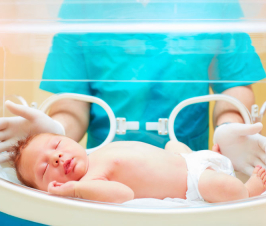It can be Difficult for many Women to Find and utilize Non-hormonal Options when it comes to Fertility
 This includes women who want to become pregnant, but also for those who are looking to avoid pregnancy. In these situations, it is common for women to be the target of hormonal therapies, whether they be oral contraceptives, hormonal IUDs, or injections for women using assisted reproductive technologies. With many women and couples having misconceptions regarding the fertile period of a woman’s cycle, it is more advantageous to educate women on their fertile signs for greater chances of either conception, or avoidance of conception.1
This includes women who want to become pregnant, but also for those who are looking to avoid pregnancy. In these situations, it is common for women to be the target of hormonal therapies, whether they be oral contraceptives, hormonal IUDs, or injections for women using assisted reproductive technologies. With many women and couples having misconceptions regarding the fertile period of a woman’s cycle, it is more advantageous to educate women on their fertile signs for greater chances of either conception, or avoidance of conception.1
There’s a stigma regarding fertility awareness methods (FAM) possibly due to the inefficacious Rhythm Method. This method, first introduced in the 1920’s, was the first fertility awareness based method of birth control.2 Although many women relied on this method and swore by its use, the rate of unplanned pregnancies were calculated at 15-18%.2 The driving factor here was the reliance on data from past menstrual cycles to calculate future fertile days. As well, the rule stated that days 12-19 of the menstrual cycle were “fertile days”2, however, this wouldn’t be reliable for women with short or long cycles.
Since this time, many other methods have been introduced, one of the most effective and accurate being the symptothermal method (STM) with a pregnancy rate of only 0.4% when used properly as a method of birth control.2 The STM incorporates three major aspects of understanding fertility: Changes in basal body temperature, characteristics and presence of cervical fluid, and cycle tracking with symptom monitoring.
In using this method on a regular basis, not only is it a means of non-hormonal birth control, but can also help couples who are trying to conceive. Current guidelines recommend that couples wishing to conceive engage in intercourse optimally every other day. But we now know that this may not be accurate.3 Knowing when a woman is most fertile and modifying sexual timing could improve a couple’s chances of conceiving.
Understanding your Cervical Fluid
The discharge, or fluid experienced throughout the menstrual cycle, has a purpose and changes in consistency for good reason. Cervical fluid has several key functions: First, it’s alkaline in nature, meaning that it provides the proper pH to protect sperm from the otherwise acidic vagina.4 It also serves as a medium for sperm movement.3 You may notice several different types or characteristics to your cervical or vaginal fluid throughout the menstrual cycle.
First, note the difference between cervical fluid and vaginal discharge. You should be able to detect a slight moisture around or inside the vagina. Moisture itself doesn’t indicate that this discharge is cervical fluid. The mucous membranes within the vaginal canal produces a natural lubrication to keep tissues moist, healthy, and to prevent infections.
You can insert a clean finger to check for this, and you will notice that upon re-exposure of that finger to air, the moisture evaporates within a few seconds.4 This type of discharge is considered “dry”. Upon wiping with tissue, you should also notice a dry feeling, especially when compared to subsequent wet or slippery fluid days. Fertility on “dry fluid” days is considered extremely low.4
Cervical fluid is apparent as estrogen levels begin to rise after menses. As we get closer to ovulation, cervical fluid becomes more noticeable and it changes in texture between the post-menstrual dry days and ovulation. This transitioning fluid can appear in many different forms. What’s important to note is that fertility becomes enhanced during these days.
A sticky fluid may appear more paste-like or rubbery in nature. It’s not truly wet or slippery, but will not stretch the same way as your most fertile fluid. Although not optimal for sperm survival, this fluid still indicates the possibility of being fertile.4
A creamy fluid is much wetter. Some women may even experience a sensation of leaking water. If held between two fingers, this type of discharge should break apart when plying your fingers apart. If you notice that in addition to feeling wet that the fluid is slippery when wiping with tissue, this is more indicative of your fertile cervical fluid. Regardless of slipperiness, fertility is increased when experiencing a creamy type fluid.
The most fertile fluid has an egg-white consistency. It’s clear, stretchy and lubricative. If you hold it between your finger and thumb and slowly pry the two apart, you will notice that the fluid stretches easily, at least a full inch. When you feel this fluid, whether on your finger or wiping with tissue, it is relatively more slippery. In one study that tracked the use of the STM, the highest probability of conception occurred on the peak mucus day for both fertile and sub-fertile couples.3 This peak mucus day is considered the last day of this egg-white fluid and indicates the day of ovulation.
Recording Basal Body Temperature (BBT)
BBT is also known as waking temperature4: Oral or axillary temperature is taken first thing in the morning upon waking, but before getting out of bed or moving around. It’s important to experience at least 3-6 consecutive hours of sleep the night before, otherwise, temperatures may be altered.4
Due to changes in hormone levels, temperatures are lowest in the pre-ovulatory phase, then rise after ovulation and stay elevated by about 0.2- 0.6 degrees until menses starts again. A woman is assumed to have ovulated after observing 3 consecutive days of temperature elevation, and therefore pregnancy is avoided by abstaining from intercourse until 3-4 days after the rise in BBT is observed.2 All subsequent days until the next menses are considered infertile days.2
Temperatures should be taken and recorded daily, looking for overall trends throughout the cycle. A single rise in temperature from one day to the next does not indicate ovulation alone, but instead, the whole chart needs to be considered. This can take some practice; some women opt for hand charting or use computer spreadsheets to track and chart their temperatures. Many others use cycle monitoring apps which log your temperatures and chart them within the app.
Keep in mind that BBT alone is a poor predictor of ovulation. First of all, there are many factors that can interfere in temperature readings, including the consumption of alcoholic beverages, poor sleep quality, and waking during the night. Secondly, some women will ovulate without a clear rise in BBT, making it harder to track ovulation.3 The other issue is that BBT alone doesn’t predict ovulation far enough in advance to identify all potential fertile days in a given cycle.2 It is for this reason that combining BBT with cervical fluid monitoring is a more accurate way of calculating fertile days.1 It’s also more appropriate for women with short or long cycles where ovulation doesn’t occur on a regular day 14.3
Calculating the Fertile Window
When calculating the fertile window, keep in mind that an ovum can only survive for roughly 24 hours. Sperm, on the other hand, can live in cervical fluid for 3-5 days. This is why a woman can be fertile for as long as 6 days before ovulation and for about 3 days post-ovulation.
Studies have calculated the highest pregnancy probability beginning 5 days before ovulation, and ending on the estimated ovulation day. The peak day for fertility has been shown as the last day with the best “egg-white” quality mucus. Meaning that it is slippery, clear, wet, and stretchy.3
Understanding these variations, and a woman’s individual cycle, can have huge implications in whether a woman conceives. It may also help to avoid unnecessary tests and advanced reproductive technologies.
A woman with a 32-day cycle, which is longer but still considered normal, may actually be ovulating closer to day 18. If she was counting on a day-14 ovulation, and therefore timed intercourse accordingly, she may completely miss her most fertile days, under the assumption that she is no longer fertile by day 15.
In some situations, couples who may have considered themselves infertile due to the inability to conceive for several months to a year, may actually be able to conceive, but have been unable to due to improper timing of intercourse.
Alternatively, this method may help other women or couples avoid pregnancy by understanding her dry days versus wet days and avoiding unprotected intercourse during the 8-9 days (approximately) of her fertile window.
References
- Hampton, K., and Mazza, D. “Fertility-awareness knowledge, attitudes and practices of women attending general practice” Aust Fam Physician. 44(11): 840-5
- Pallone, S.R., and Bergus, G.R. “Fertility awareness-based methods: another option for family planning” (2009) J Am Board Fam Med. 22(2): 147-57
- Thijssen, A., Meier, A., Panis, K, and Ombelet, W. “‘Fertility Awareness-Based Methods’ and subfertility: a systematic review” (2014) Facts Views Vis Obgyn. 6(3): 113-23
- Weschler, T. Taking Charge of Your Fertility: the Definitive Guide to Natural Birth Control, Pregnancy Achievement, and Reproductive Health ; 20th Anniversary Edition. William Morrow Paperbacks, 2015.
Image Copyright: <a href=’https://www.123rf.com/profile_dolgachov’>dolgachov / 123RF Stock Photo</a>
 Dr. Sarah King is a licensed Naturopathic Doctor, graduating from the Canadian College of Naturopathic Medicine in 2014. Prior to completing her medical studies, she attended Nipissing University where she received her Honors Bachelor of Science in Biology. Sarah has a passion for women’s health and is a birth doula in Durham and Toronto Region. She treats a wide variety of health conditions including menstrual disorders and hormone balancing, fertility, prenatal care, digestive concerns, skincare and mental health/anxiety. Outside the office Sarah is an avid runner with a love of the GTA’s best forest trails. She also continues to improve her yoga practice and teaches breath work as part of stress management counselling to her patients.
Dr. Sarah King is a licensed Naturopathic Doctor, graduating from the Canadian College of Naturopathic Medicine in 2014. Prior to completing her medical studies, she attended Nipissing University where she received her Honors Bachelor of Science in Biology. Sarah has a passion for women’s health and is a birth doula in Durham and Toronto Region. She treats a wide variety of health conditions including menstrual disorders and hormone balancing, fertility, prenatal care, digestive concerns, skincare and mental health/anxiety. Outside the office Sarah is an avid runner with a love of the GTA’s best forest trails. She also continues to improve her yoga practice and teaches breath work as part of stress management counselling to her patients.

















